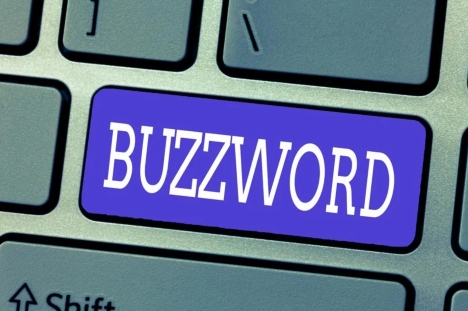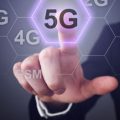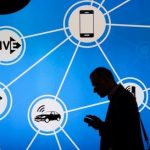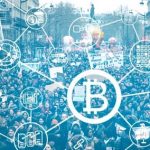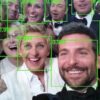60 Cool Tech Words and IT Buzzwords You Must Know (2024)
In the present world, we are living in the era of technological advancements and developments. So, it is something better to know about basic technology details. In fact, there are a large number of things and terms that are related to the technological items and so you need to know them.
Actually, the tech phrases and words may be tough to translate even if you are Googling. At that time, you may want to know just a little explanation about these terms in the highly effective manner. In that way, if you are a newbie to the current technological terms and you cannot follow what people are talking about? Then, here is the solution for you. Yes, now you can see about different kinds of technological words in this article.
1. Actionable Analytics
Actionable analytics refers to the process of interpreting data to derive practical insights that can be used to make informed decisions. It involves analyzing information in a way that allows organizations or individuals to take specific actions to improve performance or achieve objectives.
2. Altcoin
Altcoin is a term for any cryptocurrency other than Bitcoin. It encompasses a wide range of digital currencies created as alternatives to Bitcoin, each with its unique features or functionalities. Examples include Ethereum, Ripple, and Litecoin.
3. Artificial Intelligence (AI)
Artificial Intelligence refers to the development of computer systems that can perform tasks that typically require human intelligence. This includes learning, problem-solving, language understanding, and perception. AI aims to create machines capable of mimicking human cognitive functions.
4. Assistive Technology
Assistive technology involves devices, tools, or software designed to help individuals with disabilities perform tasks they might otherwise struggle with. It aims to enhance accessibility and improve the quality of life for people with diverse needs.
5. Augmented Reality (AR)
Augmented Reality overlays digital information onto the real world, enhancing the user’s perception of their environment. AR technologies blend virtual elements with the physical world, often experienced through devices like smartphones or AR glasses, offering interactive and immersive experiences.
6. Avatar
An avatar in technology refers to a graphical representation of a user or entity in a virtual environment. It is often a personalized image or 3D model that represents an individual in online platforms, social media, or virtual reality settings.
7. Big Data
Big Data refers to the massive volume of structured and unstructured data that organizations generate on a daily basis. It involves processing and analyzing vast datasets to extract valuable insights, patterns, and trends, which can inform decision-making processes and drive innovation.
8. Blockchain
Blockchain is a decentralized, distributed ledger technology that securely records transactions across multiple computers. It ensures transparency, security, and immutability, making it ideal for applications like cryptocurrencies, supply chain management, and smart contracts.
9. Cloud Computing
Cloud Computing involves the delivery of computing services (e.g., storage, processing power, software) over the internet. It enables on-demand access to resources, flexibility, and scalability, allowing users to avoid the need for physical infrastructure and manage their IT needs more efficiently.
10. Commjacking
Commjacking, short for Communication Hijacking, refers to the unauthorized interception and manipulation of communication channels. It can involve eavesdropping on communication networks or taking control of communication devices, posing serious security threats in various domains, including cybersecurity and telecommunications.
11. CubeSat
A CubeSat is a type of miniaturized satellite built in standardized cube-shaped units. These small satellites are often used for scientific research, educational purposes, and technology demonstrations in space exploration.
12. Cybersecurity Mesh
Cybersecurity Mesh refers to a decentralized, adaptive security approach that focuses on creating a flexible and interconnected network of security components. This model aims to enhance cybersecurity by distributing security controls across various devices and systems, allowing for better adaptability and resilience against cyber threats.
13. Cybernetics
Cybernetics is an interdisciplinary field that studies the structure and function of systems, especially those involving communication and control. It explores the relationships between living organisms and machines, emphasizing feedback mechanisms and self-regulation.
14. Cyberpunk
Cyberpunk is a genre of science fiction that often portrays a dystopian future where advanced technology coexists with a breakdown of societal order. It typically features hacker subcultures, mega-corporations, and a gritty, high-tech urban environment.
15. Data Mining
Data Mining involves extracting valuable patterns and information from large datasets using various techniques, such as machine learning and statistical analysis. It aims to uncover hidden knowledge, trends, and relationships within the data to inform decision-making and gain insights into complex systems.
16. Decentralization
Decentralization refers to the distribution of control and decision-making across a network, reducing reliance on a central authority. In the context of technology, blockchain exemplifies decentralization, ensuring transparency and security by eliminating a single point of failure.
17. Deep Learning Super Sampling (DLSS)
DLSS is a technology by NVIDIA that utilizes artificial intelligence and deep learning to enhance the resolution of images in real-time. It leverages neural networks to upscale lower-resolution images, providing improved visual quality and performance in graphics-intensive applications, such as gaming.
18. DevOps
DevOps is a software development approach that emphasizes collaboration and communication between development and IT operations teams. It aims to automate the software delivery process, ensuring faster and more reliable development cycles by breaking down traditional silos between different stages of development and deployment.
19. Digital Immune System (DIS)
A Digital Immune System is a cybersecurity concept inspired by the human immune system. It involves using advanced technologies like artificial intelligence and machine learning to detect and respond to cyber threats in real-time, providing adaptive and proactive defense mechanisms against evolving cyber attacks.
20. Digital Twins
Digital Twins are virtual representations of physical objects, processes, or systems. In the realm of IoT and Industry 4.0, digital twins enable real-time monitoring, analysis, and simulation of physical entities. This technology enhances decision-making, predictive maintenance, and overall efficiency by creating a digital counterpart that mirrors the behavior and characteristics of its physical counterpart.
21. Distributed Cloud
Distributed Cloud refers to a cloud computing model where computing resources and services are decentralized across multiple physical locations, enhancing reliability, scalability, and data residency. This approach allows organizations to leverage cloud capabilities while distributing workloads strategically, reducing latency and improving performance for users across various locations.
22. Edge Computing
Edge Computing involves processing and analyzing data closer to its source, typically on or near the devices generating the data, rather than relying solely on centralized cloud servers. This decentralized approach minimizes latency, increases real-time processing efficiency, and is particularly useful for applications requiring quick responses, such as IoT devices and time-sensitive data analytics.
23. Everything as a Service (XaaS)
Everything as a Service (XaaS) is a broad term encompassing various cloud computing services delivered over the internet. It includes Software as a Service (SaaS), Platform as a Service (PaaS), Infrastructure as a Service (IaaS), and other on-demand services. XaaS provides scalable, flexible, and subscription-based access to a wide range of IT resources, allowing organizations to adapt and optimize their technology infrastructure according to specific needs.
24. Exascale Computing
Exascale Computing refers to high-performance computing systems capable of executing a quintillion (10^18) calculations per second. It represents the next frontier in computational capabilities, enabling scientists and researchers to tackle complex simulations, big data analytics, and artificial intelligence applications at an unprecedented scale. Exascale systems are crucial for advancing scientific research, weather forecasting, and solving intricate computational challenges.
25. Extended Reality (XR)
Extended Reality (XR) is an umbrella term encompassing virtual reality (VR), augmented reality (AR), and mixed reality (MR) technologies. XR alters the way users interact with the digital and physical worlds by creating immersive, computer-generated environments or enhancing real-world experiences. VR immerses users in entirely virtual environments, AR overlays digital content onto the real world, and MR blends both, allowing interaction with both digital and physical elements simultaneously. XR finds applications in gaming, education, healthcare, and various industries, transforming how information is presented and experienced.
26. Fakersation
Fakersation refers to artificial or insincere conversation, often generated by automated systems or fake personas. It involves the simulation of human-like interaction, typically for deceptive purposes, such as spreading misinformation or manipulating social media discussions.
27. Federation Against Software Theft (FAST)
FAST is an acronym for the Federation Against Software Theft, a UK-based organization dedicated to combating software piracy. FAST works to protect intellectual property rights by raising awareness, conducting legal actions against infringers, and promoting legal software use within businesses.
28. Flaming
Flaming in the context of online communication refers to the act of posting aggressive, hostile, or inflammatory messages. It involves the use of offensive language with the intent of provoking emotional responses and escalating conflicts within online communities or discussions.
29. GameFi
GameFi combines elements of gaming and decentralized finance (DeFi). It involves integrating financial services and incentives into blockchain-based games, allowing players to earn and trade in-game assets with real-world value, fostering a new paradigm where gaming and finance intersect.
30. Gamification
Gamification involves applying game design elements and principles to non-game contexts, such as business processes, education, or marketing. The goal is to engage and motivate individuals by incorporating game-like features, such as points, rewards, and competition, to enhance user experience and achieve specific objectives in non-game environments.
31. Generative AI
Generative AI refers to a type of artificial intelligence that creates new content, such as images, text, or even entire pieces of software, rather than simply processing existing data. It utilizes algorithms and neural networks to generate novel outputs based on patterns and information it has learned during training. This technology has applications in creative fields, content generation, and problem-solving, contributing to innovations in various industries.
32. Gigaflops (GFLOPS)
Gigaflops is a unit of measurement for computing performance, representing one billion floating-point operations per second. It quantifies a computer’s processing speed and is often used to assess the performance of CPUs, GPUs, and other processors. The term is crucial in evaluating the capabilities of hardware, especially in fields like scientific computing, artificial intelligence, and high-performance computing.
33. Gig Economy
The gig economy refers to a labor market characterized by short-term, flexible jobs and freelance work, often facilitated through digital platforms. Workers in the gig economy are typically independent contractors, engaging in temporary or project-based work. This trend is fueled by technology and has transformed traditional employment structures, providing both opportunities and challenges for workers and businesses alike.
34. Hyperautomation
Hyperautomation is an approach to automation that goes beyond traditional robotic process automation (RPA) by combining various technologies like artificial intelligence, machine learning, and advanced analytics. It aims to automate and optimize complex business processes end-to-end, enhancing efficiency and productivity. Hyperautomation leverages interconnected tools to streamline workflows, allowing organizations to adapt to rapidly changing business environments.
35. Hyper-Personalization
Hyper-personalization involves tailoring products, services, and experiences to individual preferences using advanced data analytics, machine learning, and customer behavior analysis. This approach goes beyond traditional personalization by creating highly customized and relevant interactions for each user. Companies leverage data to understand customer needs, delivering personalized content, recommendations, and services. Hyper-personalization enhances user engagement, satisfaction, and loyalty, contributing to a more tailored and enjoyable customer experience.
36. Internet of Things (IoT)
IoT refers to the interconnected network of physical devices, vehicles, and appliances embedded with sensors, software, and connectivity, allowing them to exchange data and perform tasks without direct human intervention. It enhances efficiency, automation, and data-driven decision-making across various industries, from smart homes to industrial settings.
37. Li-Fi
Li-Fi, or Light Fidelity, is a wireless communication technology that uses visible light and LED bulbs to transmit data. It offers high-speed internet connectivity, potentially surpassing traditional Wi-Fi. Li-Fi is more secure and efficient, as it operates within a confined area illuminated by the light source, making it suitable for environments where radio frequency interference is a concern.
38. Machine Customers
The term “Machine Customers” refers to automated systems or artificial intelligence programs that act as consumers in the digital realm. These machines make autonomous decisions, purchase goods or services, and interact with other systems, creating a new paradigm for e-commerce and digital transactions.
39. Machine Learning (ML)
Machine Learning is a subset of artificial intelligence that enables systems to learn from data and improve their performance over time without explicit programming. ML algorithms analyze patterns, make predictions, and adapt, finding applications in various fields, including healthcare, finance, and recommendation systems.
40. Metaverse
The Metaverse is a virtual shared space that combines aspects of augmented reality (AR), virtual reality (VR), and the internet. It’s an immersive digital environment where users can interact with each other and digital objects in real-time. The concept includes social experiences, gaming, and virtual economies, redefining online interactions beyond current limitations.
41. Multiexperience
Multiexperience refers to the seamless and integrated use of various digital touchpoints, such as augmented reality (AR), virtual reality (VR), voice, and other interfaces, to create a cohesive user experience. It aims to provide users with a consistent interaction across different platforms and devices, enhancing overall engagement and usability.
42. Nanotechnology
Nanotechnology involves manipulating matter at the nanoscale, typically at dimensions of 1 to 100 nanometers. This technology enables the creation and manipulation of materials and devices with unique properties, impacting various fields such as medicine, electronics, and materials science. The ability to work at the molecular level offers new possibilities for creating innovative products and solving complex challenges.
43. Net Neutrality
Net Neutrality is the principle that internet service providers should treat all data on the internet the same way, without discriminating or charging differently based on the content, website, or platform. It advocates for an open and equal internet, preventing ISPs from favoring certain websites or services over others, ensuring fair access for all users.
44. Neuralink
Neuralink is a neurotechnology company founded by Elon Musk that aims to develop brain–machine interface (BMI) technologies. Neuralink focuses on creating direct communication between the human brain and external devices, potentially revolutionizing the way we interact with technology and treating neurological disorders by enhancing brain capabilities.
45. Non-Fungible Token (NFT)
Non-Fungible Token (NFT) is a unique digital asset representing ownership or proof of authenticity using blockchain technology. NFTs can represent various digital or physical items, including art, music, and virtual real estate. Each token is distinct and cannot be replicated, providing a secure and verifiable way to trade and authenticate digital assets in the digital realm.
46. Peopleware
Peopleware refers to the human elements in the realm of technology and information systems. It encompasses the individuals, teams, and culture within an organization that contribute to its success. Peopleware emphasizes the importance of collaboration, communication, and the overall human factor in creating effective and efficient software systems.
47. Phygital Convergence
Phygital Convergence is the merging of physical and digital experiences. It represents the integration of physical and digital elements, breaking down the traditional barriers between offline and online interactions. This concept is particularly relevant in retail, events, and marketing, where businesses seek to create seamless and immersive experiences that span both the physical and digital realms.
48. Quantum Computing
Quantum computing is a cutting-edge field that utilizes the principles of quantum mechanics to process information. Unlike classical computers that use bits, quantum computers use qubits, which can exist in multiple states simultaneously. This enables quantum computers to perform complex calculations exponentially faster than traditional computers, potentially revolutionizing fields such as cryptography, optimization, and simulations.
49. Rankify
Rankify refers to the process of assigning a numerical or hierarchical rank to items based on certain criteria. In the context of technology and data, it often involves algorithms and machine learning models that assess and order items, such as search results, recommendations, or datasets, according to their relevance or importance.
50. Sentiment Analysis
Sentiment Analysis, also known as opinion mining, is a technique in natural language processing that involves analyzing text data to determine the sentiment expressed within it. This process uses algorithms to identify and categorize opinions as positive, negative, or neutral, providing valuable insights into public opinion and enabling businesses to understand customer feedback, social media sentiment, and other textual data sources.
51. Silent Commerce
Silent Commerce refers to seamless, frictionless transactions that occur without direct human involvement. It often involves technologies like RFID, IoT, and mobile payments, enabling users to make purchases or transactions without traditional checkout processes. This concept is prevalent in retail environments, where customers can shop and exit without interacting with a cashier.
52. Social Audio
Social Audio is a digital communication trend where individuals engage in live audio conversations or discussions through online platforms. Popularized by apps like Clubhouse, it facilitates real-time, voice-based interactions, connecting people globally. It blends social networking with audio content, allowing users to participate in discussions, interviews, or forums without the need for video or text.
53. Software as a Service (SaaS)
SaaS is a cloud computing model where software applications are delivered over the internet on a subscription basis. Instead of purchasing and installing software locally, users access and use the software through a web browser. This model offers flexibility, scalability, and automatic updates, making it a popular choice for businesses looking for cost-effective and efficient software solutions.
54. Spatial Computing
Spatial Computing involves the integration of physical space with digital elements, creating immersive and interactive experiences. It encompasses technologies like augmented reality (AR) and virtual reality (VR), enabling users to interact with and manipulate digital content in real-world environments. Spatial Computing has applications in gaming, education, healthcare, and various industries to enhance user experiences and data visualization.
55. Spendlytics
Spendlytics refers to the analysis and visualization of financial spending patterns using advanced analytics and data visualization tools. It allows individuals or businesses to gain insights into their expenditures, identify trends, and make informed financial decisions. This can involve tracking and categorizing expenses, setting budgets, and utilizing predictive analytics to forecast future spending behavior, providing a comprehensive view of financial habits for better financial management.
56. Stable Diffusion
Stable Diffusion refers to the consistent and controlled spread of a technological innovation or advancement. It involves the gradual integration of new technologies into various industries without causing disruptions or instability. This approach ensures a smooth transition, allowing organizations to adopt and adapt to changes without compromising their stability.
57. Technological Unemployment
Technological Unemployment is the phenomenon where job displacement occurs due to the automation and integration of technology in various industries, leading to a decline in the demand for human labor. This concept highlights the potential negative impact of technological advancements on employment rates, as machines and algorithms replace certain job functions, requiring a shift in workforce skills and a reevaluation of societal structures.
58. Total Experience (TX)
Total Experience (TX) refers to a comprehensive approach in designing and managing user interactions across multiple touchpoints. It combines user experience (UX), customer experience (CX), employee experience (EX), and other dimensions to create a seamless and integrated overall experience. TX emphasizes holistic engagement, recognizing that positive interactions contribute to brand loyalty, productivity, and overall satisfaction.
59. Virtual Private Network (VPN)
A Virtual Private Network (VPN) is a technology that creates a secure and encrypted connection over the internet, enabling users to access and transmit data privately. VPNs are commonly used to protect sensitive information from cyber threats, ensure privacy, and bypass geographical restrictions. They establish a virtual tunnel between the user’s device and the destination server, making it difficult for unauthorized entities to intercept or manipulate the transmitted data.
60. Virtual Reality (VR)
Virtual Reality (VR) refers to a computer-generated simulation of an immersive and interactive environment that can be experienced using special hardware, such as VR headsets. VR aims to provide users with a lifelike and three-dimensional experience, often used in gaming, training simulations, and virtual tours. By creating a sense of presence and interaction, VR enhances user engagement and can be applied in various fields for experiential learning and entertainment.
61. Web3
Web3 is a conceptual evolution of the internet that envisions a decentralized and user-centric web. It involves blockchain technology, decentralized applications (DApps), and smart contracts to enable greater user control over data and digital assets. Web3 aims to move away from centralized models dominated by tech giants, fostering a more open, transparent, and inclusive internet where users have ownership and autonomy over their online identities and activities.
62. Zero Trust
Zero Trust is a security framework that assumes no inherent trust, even within an organization’s network. It requires strict verification of anyone trying to access resources, regardless of their location or network connection. Zero Trust emphasizes continuous authentication, monitoring, and access controls to mitigate the risk of cyber threats. This approach is essential in today’s evolving threat landscape, where traditional perimeter-based security measures may not be sufficient to protect against sophisticated attacks.
Tags: internet, it knowledge, seo, technology



